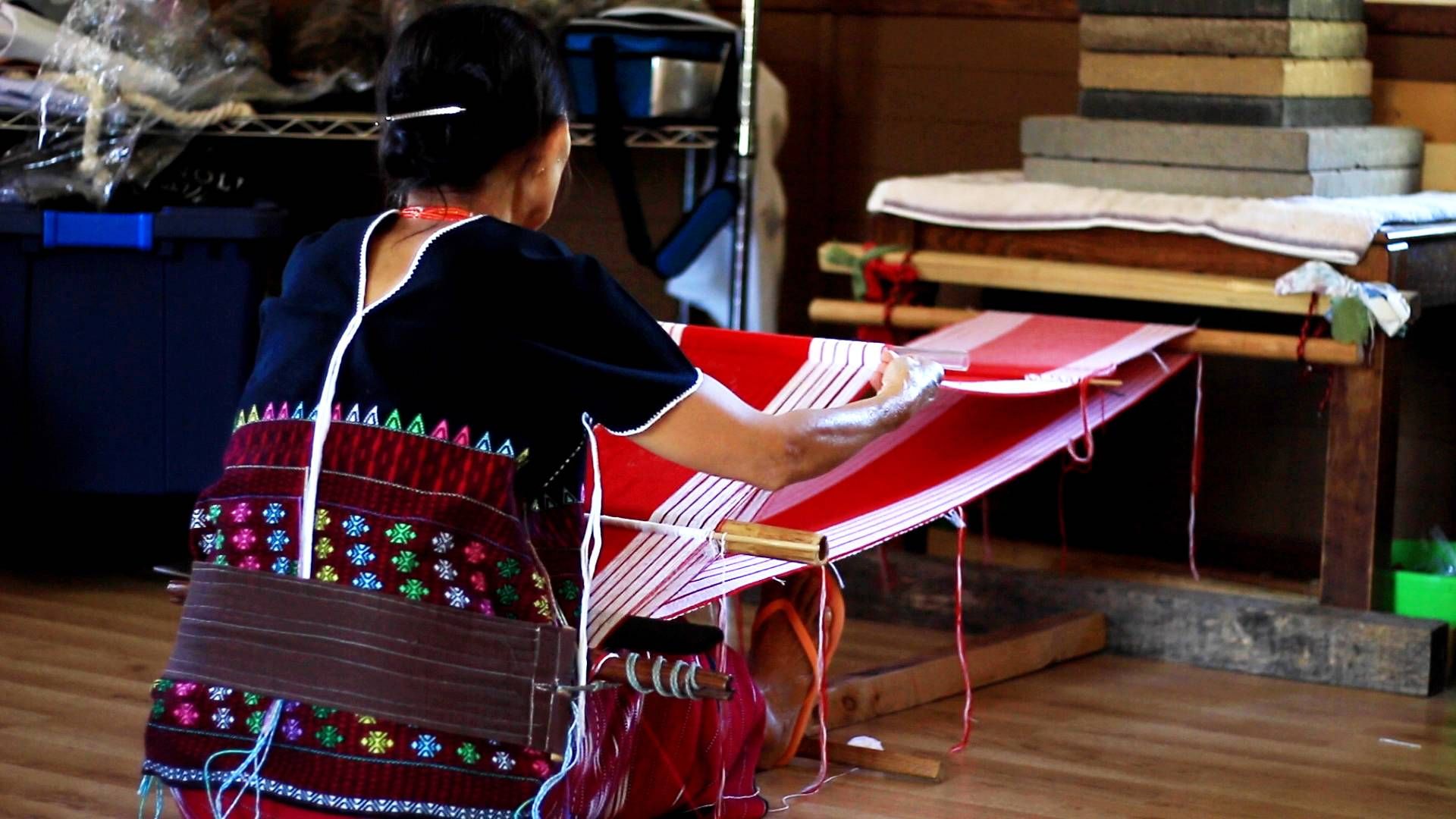Worn Within: Why is weaving essential to a Karen wedding?
WATCH: Like a bride and her groom, the marriage customs and the weaving traditions of the Karen people go hand-in-hand.
The Karen ethnic group is primarily from Kayin State (formerly Karen State) in Burma (also known as Myanmar). However, due to political unrest and violence targeting their group, many fled their home country in seek of refuge. Today, there are more than 17,000 Karen people living in Minnesota.
As a Karen woman living in a war-torn country, Shi Paw endured many hardships and challenges, but the one cultural tradition she clung to revolved around textile art. That love provided her with some of her biggest blessings.
"Weaving is her hobby, and she's very passionate about it. She weaves almost every day," Paw's daughter, Linvy Thein, shares of her mother's art form.

WEAVING AS A COMFORT
Paw learned how to weave at a very young age in her hometown village in Burma. And by the time she turned 12, she mastered every weaving technique known to her.

But also at age 12, her family was forced to abandon their home, leaving many of their treasured belongings behind. For Paw, she always left her backstrap loom. Every time her family relocated, she abandoned her loom, only to build a new one when they arrived in a new settlement.
Due to the ongoing civil war in Burma – which spans more than seven decades – many Karen families continuously fled in fear of persecution or were displaced to different regions by the Burmese army.
But Paw's loom and obsession with weaving always provided comfort in a time of turmoil.
WEAVING AS AN INCOME
After being on the run for 30 years, Paw escaped to the refugee camps in Thailand in 1997. There, weaving provided a different type of comfort: It became a source of revenue.
"In the refugee camps, we didn't have much food or support, so we had to [weave] for our living - to survive. Like my mom, she weaved a lot, and she sold [her weavings], and she supported us to go to school and everything," Thein explains.
The earnings from Paw's weaving also made it possible for the family to move to Saint Paul, Minn., in 2011. Even in a more settled place, weaving remained a strong focus for Paw, who brought the spindles from her decade-old loom in Thailand when she left for the United States.

WEAVING AS AN IDENTITY
"When I weave now, it reminds me that the younger generation shouldn't forget their tradition, identity and culture," Paw says [quote translated into English].
Now in Minnesota, she takes comfort in knowing that there are Karen survivors just like her, who share her passion for weaving.
And her goal now is not just to continue weaving, but also to create a safe space for Karen refugees, as well as to preserve her weaving traditions for as long as possible.
Want to learn about other approaches to traditional clothing? Check out more episodes of Worn Within.
Production Team: Susan Thao, Carrie Clark, Eric Pagel, and Kristen Blekum
Illustrations and Graphics: Maria Ahrens and Ben Malley

This story is made possible by the Arts and Cultural Heritage Fund and the citizens of Minnesota.
Ever wondered about the differences between Dakota and Ojidwe beadwork? Discover the intricate nuances in this episode of Worn Within.
The bright, geometric patterns of Ankara textiles are a hallmark of West African clothing - but the tradition actually came from another part of the world. Find out more in this episode from Worn Within.
After the Vietnam War, many of the traditions and designs of Hmong Paj Ntaub changed completely. But how and why did it change? This episode of Worn Within has the answers.
